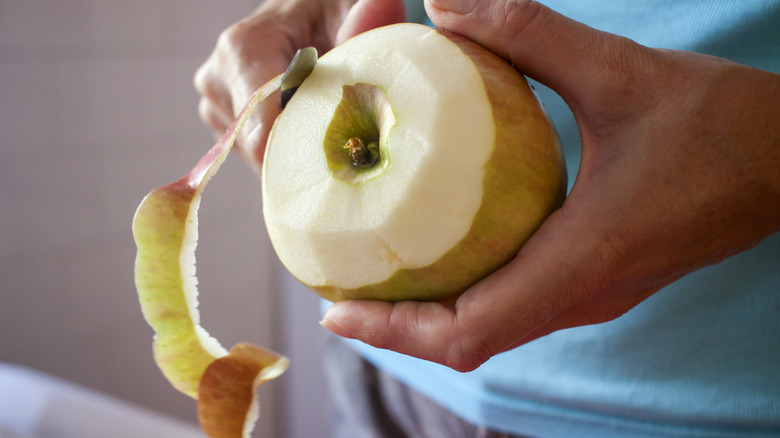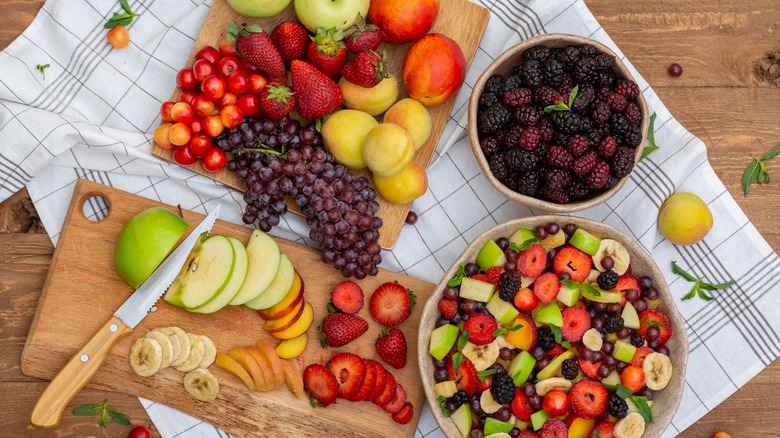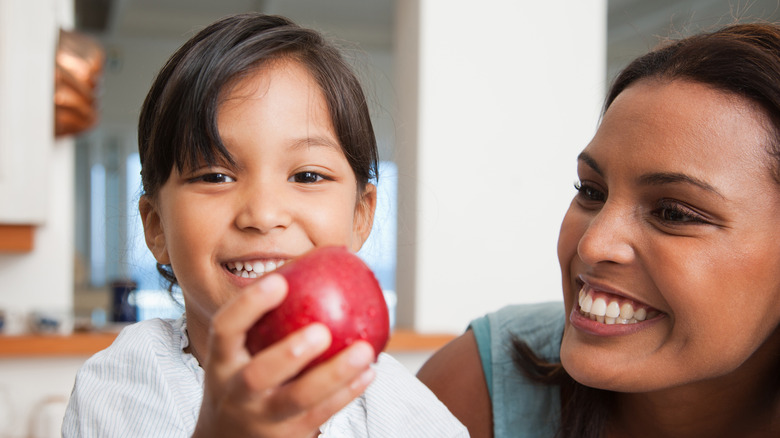When To Peel Fruits With Paring Knives Vs Vegetable Peelers
Ahh, fruit — nature's convenient and nutritious little snack. Whether you're grabbing fruit for an on-the-go snack, serving up a colorful fruit salad, or just savoring the unbeatable taste of a slice of juicy watermelon on a hot summer day, the tools you use to prep your fruit matter. And unlike the obvious grab-and-go options like a banana or grapes, it's not always intuitive how to peel fruits and when to reach for a paring knife versus a vegetable peeler.
Of course, you can always go for convenience and pick up containers of pre-washed and diced fruit from the grocery store, but there are many benefits to choosing whole, unpeeled fruit from the store or, better yet, a locally produced one. You'll often get the fresher, more delicious picks — not to mention the cost-saving benefits and reduction of plastic packaging ending up in the landfill. If you're in a time crunch but still want to enjoy more fruit in your diet, it pays to know which tool to use and when. This simple bit of kitchen know-how can make a big difference in how quickly you can prep your fruit and, as a result, how much fresh fruit you eat.
The Optimal Tool for Peeling Fruit Depends on the Skin
Regardless of how you're eating your fruit, first things first; stop, drop, and wash. Even organic fruit from the farmer's market can harbor dirt, grime, and bugs, not to mention pesticides and possible pathogens. When your fruit is washed, and it's time to grab the best kitchen tool for removing the skin, the thickness and nature of the skin itself tell you if you should be reaching for a vegetable peeler or a paring knife.
As a general rule of thumb, fruits with more delicate, thin skin – think plums, apples, peaches, nectarines, and the like, are best peeled with a paring knife so as not to remove chunks of the fruit's flesh. And for fruits with tougher, thicker skins, grab your peeler, which can be easier to work with and allows you to quickly remove strips of the skin when delicacy isn't as needed — like with pears, apples, mango, or kiwi (via Martha Stewart).And because safety comes first, whichever tool you're using, be sure it's sharp, dry the fruit well before handling so it doesn't slip out of your grip, and always use common-sense safe knife skills and use the peeler pointing away from you.
How to Best Enjoy Your Peeled (or Unpeeled) Fruit
It might be obvious that certain fruits don't need to be peeled — think watermelons, cantaloupe, or a juicy orange that you simply slice into. But plenty of others, like apples, peaches, nectarines, and kiwis, hide a boatload of vitamins and nutrients in their skins, so don't be too fast to toss them. Remember the whole "apple a day saying? Well, an apple enjoyed with the skin contains a whopping 20% more calcium, 115% more vitamin C, and an extra 332% more vitamin K compared to a peeled apple.
Some delicious ways to enjoy your peeled (or unpeeled!) fruit could include, of course, on their own, or to amp up the protein and stay full longer, dip fruits like apples in peanut or almond butter, toss cubed peaches and mango on cereal, yogurt, or oatmeal, or throw just about any combination into a blender for a flavorful fruit smoothie to take with you. Don't sleep on cooking with fruit, too — especially if leaving the skin on fruit gives you the ick, but you want the nutrients. Try making a dessert with baked apples or cooking down skin-on tomatoes into a red sauce (yes, they're technically a fruit!) Getting in your five servings of fruits or veggies daily just got way easier.


